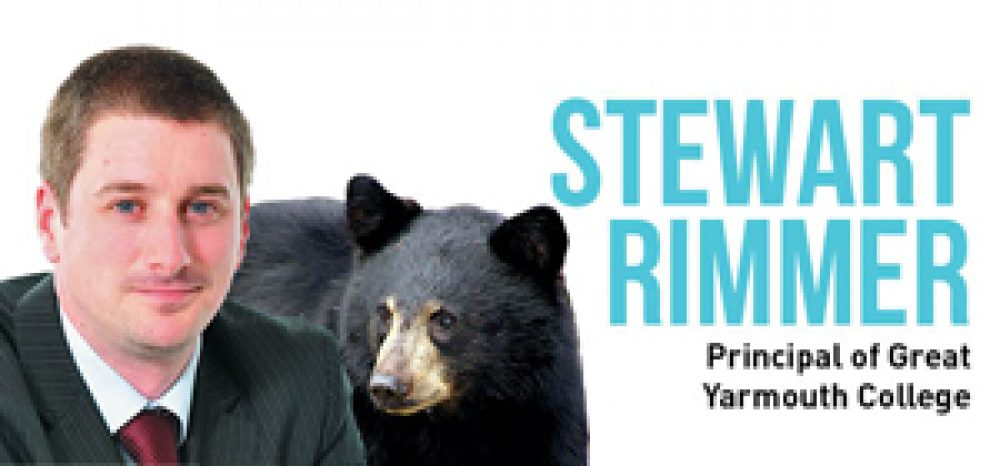The government’s programme of post-16 area reviews has been likened to Charles Darwin’s evolutionary theory on survival of the fittest. Stuart Rimmer develops on this theme, comparing providers to different types of bears.
With the Department for Business, Innovation and Skills’ publication of the amplified guidance for area reviews and the Secretary of State Sajid Javid creating ‘insolvency regimes’ for colleges in future difficulty, it raises the question of what kind of sector will we have in the future?
In the context of ‘larger, more resilient colleges’, I cast my mind back to the November Association of Colleges conference — where a small group of principals were sat having a coffee and discussing whether or not we should be applying Darwin’s survival of the fittest philosophy to FE.
Darwin wrote: “Natural selection almost inevitably causes much extinction of the less improved forms of life and induces what I have called divergence of character.”
Quickly our thoughts turned to animals, and in particular bears.
Why bears? Well, they exist in many forms and have had to adapt to a variety of environments, much like FE.
We pondered, if the FE sector was divided into groups of bears, what might it look like and what should happen next, how might their characters diverge?
And what breed of bear is likely to survive a faster changing environment?
So firstly let’s imagine the panda. A large, heavy animal, coupled with a limited and specific food source, means its ability to adapt is restricted.
If the FE sector was divided into groups of bears, what might it look like and what should happen next, how might their characters diverge?
So it’s slow to respond, slow to breed, a protected species, low in numbers, only found in captivity, but everyone loves them because they look nice and they are rare.
The reality is they are incapable of survival in the wild, they struggle to feed themselves or successfully procreate and rely on hand outs from kindly visitors. If there was a ‘grade 4’ bear that would be it.
So, further up the food chain we find the koala. A smaller, nimbler bear that thinks it’s clever but it too has a limited diet (eating one thing over and over), and is very territorial and prone to tantrums.
It doesn’t like to share or live collaboratively. It doesn’t move a lot and only survives in limited geographical areas. In times of danger it will retreat up its tree and wait (and hope) it will pass.
Next we consider the polar bear. A favourite of governments who are always keen to fundraise for them.
They are distinctive, big and seemingly tough and resilient.
They are an alpha predator. But being ‘specialist’ they are vulnerable to their environment changing.
Food is now becoming scarce on the melting ice plains of the artic. They lumber around looking big and tough, but alone — has this ‘elite’ bear had its day?
The ecosystem won’t support them for much longer, as they are forced to seek food over vast geographical areas and in environments to which they are less suited.
Finally, thoughts turned to the brown bear. The ‘outstanding’ bear of choice. They have a mixed diet, adapt to a variety of environments and climates, are family orientated, able to move quickly, and defend themselves against attack.
They’re cuddly on the outside and able to live alongside other species, but have a mean set of teeth for anyone who wants to take their dinner.
Of course it’s a struggle for all the bears in the long term as environments change.
Darwin never said the biggest and strongest would survive.
He said: “It is not the strongest of the species that survives, nor the most intelligent, but rather the one most adaptable to change.”
So, post area-based review, what bear would you aim to be, or maybe bears won’t survive at all?
Personally I am hoping they do, we should love and preserve our bears.







I completely agree with Stuart Rimmer here – the sector needs to build resilience and diversify if it is to stay relevant and financially solvent.